 I learned about the Caterpillar Club when I interviewed some flying WASPs—not the kind that buzz around on tiny wings. These WASPs were airplane pilots, the first women to fly for the United States military. They served during World War II: the Women Airforce Service Pilots (or WASP, for short). The Caterpillar Club they told me about was named for silkworm caterpillars that helped save pilots’ lives. If a plane developed engine trouble in midair, pilots could float to safety by using a parachute made from silk, a lightweight cloth that silkworm caterpillars help create. These caterpillars use a spit-like substance in their mouths to spin a long silk thread that they wrap around themselves, forming a cocoon that they live in for several weeks until they become moths. Those long silk threads can then be unwound from the cocoons and woven together to make silk cloth. About twenty years before World War II, a parachute company started the Caterpillar Club for people whose lives were saved by using a parachute to escape from a disabled plane. People could write to the company about their parachute rescue, pay a membership fee, and the company would send them a little caterpillar pin. However, the WASP pilots I spoke with said that some pilots liked to feel they were part of the Caterpillar Club even if it wasn’t an aircraft’s fault that led them to use a parachute. During World War II, pilots—both men and women—trained to fly military aircraft for the Army in small open planes. The planes didn’t have a roof. If a nervous pilot-in-training forgot to buckle the seat belt and the plane tipped over, the pilot could fall out! Fortunately, they always wore a parachute. Landing safely—thanks to the parachute—not only let them feel part of the Caterpillar Club, but also helped the students remember to never, ever forget to buckle up again. However, by World War II, many parachutes used by U.S. pilots weren’t made of silk. The silk-producing areas of the world were controlled then by Japan, which the U.S. was fighting in this war. Because U.S. companies could no longer get silk cloth, they began making parachutes from a new material scientists had just invented—nylon. Most parachutes are made of nylon today. Even so, the Caterpillar Club lives on. Click here for source notes on this article. 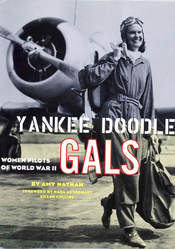 If you are interested in finding out more about the WASPs, Amy Nathan has written a book on the subject. Through firsthand accounts, she tells how these early pilots they test-flew newly repaired aircraft, dragged banners behind their planes so male trainees could practice shooting moving targets with live ammunition (!), and ferried all kinds of aircraft from factories to military bases. Yankee Doodle Gals will give you a new look at World War II and show you just how dramatically society has changed since then. Click here for more information. MLA 8 Citation
Nathan, Amy. "Caterpillars to the Rescue." Nonfiction Minute, iNK Think Tank, 20 Mar. 2018, www.nonfictionminute.org/the-nonfiction-minute/ Caterpillars-to-the-Rescue.
0 Comments
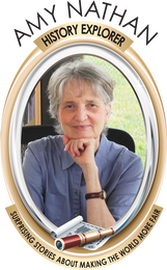 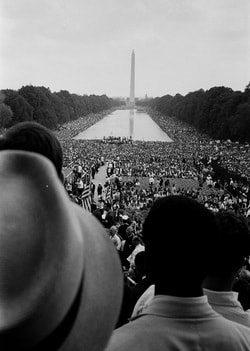 The view from the Lincoln Memorial on August 28, 1963, during the March on Washington for Jobs and Freedom. Credit: Courtesy Library of Congress The view from the Lincoln Memorial on August 28, 1963, during the March on Washington for Jobs and Freedom. Credit: Courtesy Library of Congress On August 28, 1963, the Reverend Dr. Martin Luther King, Jr., stood on the steps of the Lincoln Memorial in Washington, D.C., and looked out at a sea of faces reaching as far as the eye could see. More than 200,000 people had gathered there to take part in one of the largest protest rallies in United States history: the March on Washington for Jobs and Freedom. Standing there that day, Dr. King delivered a stirring speech: his “I Have a Dream” speech. It’s a speech that has been voted the best political speech given in the United States during the 20th century, according to a group of 137 experts on speechmaking who were asked to pick the century’s 100 top speeches. In this speech, Dr. King called for an end to segregation and discrimination, which had led to so many people being treated unfairly just because of the color of their skin. He spoke of his dream that one day the nation would live up to the idea set forth in its Declaration of Independence—that “all men are created equal.” He spoke also of his dream that one day black children and white children would treat each other as sisters and brothers. Today, visitors to the Lincoln Memorial in Washington can stand on the very spot where Dr. King stood more than fifty years ago to deliver his famous speech. The location is marked by these words that have been chiseled into a stone landing about eighteen steps down from the top: I HAVE A DREAM MARTIN LUTHER KING, JR. THE MARCH ON WASHINGTON FOR JOBS AND FREEDOM AUGUST 28, 1963 Carving these words into the stone step came about because of a tourist from Kentucky who visited the Lincoln Memorial in 1997 and wondered why there wasn’t a sign to let people know where Dr. King had stood. This visitor wrote to his representative in Congress, who agreed that marking the spot was a good idea and had Congress passed a law to allow that to happen. To figure out exactly where Dr. King stood, officials at the National Park Service, which manages the Lincoln Memorial, carefully studied photos and video that had been taken during the speech. Then, in 2003, they arranged for a local stone cutter to carve the words into the step where they decided Dr. King had stood. You have to look closely to find those words in the stone. They’re not highlighted in a bright color. But when you find them, you can stand up on that step and look out as Dr. King did, and try to imagine how he must have felt as he shared his hopes and dreams for his country with that huge crowd.. Click here for Dr. King’s “I Have a Dream Speech.” Click here for article Sources. 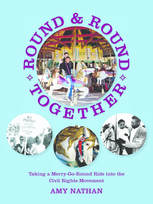 Amy Nathan is the author of Round and Round Together: Taking a Merry-Go-Round into the Civil Rights Movement, which tells of another civil rights milestone that took place on August 28, 1963—the day Dr. King gave his famous speech. That same day, about forty miles away from the Lincoln Memorial, a once-segregated amusement park at last dropped segregation, and a very young girl took a very special ride on a merry-go-round. MLA 8 Citation
Nathan, Amy. "Standing with Doctor King." Nonfiction Minute, iNK Think Tank, 12 01 2018, www.nonfictionminute.org/the-nonfiction-minute/ Standing-With-Doctor-King. 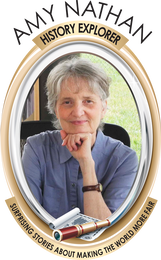 The song “We Shall Overcome” was an important part of the civil rights movement of the 1960's. It gave hope and courage to thousands of blacks and whites who protested peacefully against unfair treatment of African Americans. The song is easy to sing, but its words carry a powerful message. Here’s its main verse: We shall overcome, We shall overcome, We shall overcome some day, Oh, deep in my heart I do believe We shall overcome some day. Often protestors faced hostile crowds, were arrested, or even beaten up when they took part in nonviolent demonstrations that called for all Americans—no matter their skin color—to have the same right to vote and be treated fairly in restaurants, stores, businesses, schools, buses, trains—and even amusement parks. Reverend Dr. Martin Luther King, Jr., a main leader of the civil rights movement, urged demonstrators not to fight back, no matter how badly they were treated. This song helped them do that. Holding hands and joining their voices in “We Shall Overcome” during demonstrations—or in jail—helped them feel they weren’t alone and that despite the danger, their efforts would lead to a better America. The protests did indeed lead to new laws being passed. The 1964 Civil Rights Law makes it illegal for any business that serves the public to discriminate against people because of race, religion, gender, or national origin. The 1965 Voting Rights Law outlaws rules that make it hard for blacks to vote. News about these nonviolent protestors—and their song—spread around the world. Before long, people protesting for fair treatment in other countries began singing “We Shall Overcome” in their own languages. It has been sung by demonstrators in such varied countries as India, Czechoslovakia, Romania, China, and Britain. While I was doing research for a book on civil rights, a man told me how the song helped him when he was surrounded by a hostile mob that hurled insults (and some rocks) during a 1963 demonstration at an amusement park that refused to let in blacks. When police arrived to arrest the protestors (not the stone thrower), the demonstrators held hands and sang the song as they walked through the mob to the police van. Their voices were shaky as they sang the verse “We are not afraid,” because they were very afraid, but the song gave them the courage to keep going. Click here for source notes on this article. 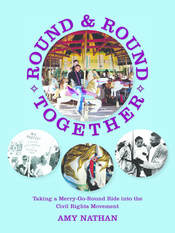 Amy Nathan is the author of Round and Round Together: Taking a Merry-Go-Round into the Civil Rights Movement, which tells the tale of the nearly ten years of protests that were needed to finally end segregation at an amusement park, placing the story of the park—and its merry-go-round—within the context of the civil rights movement as a whole. For more information on the book, click here. MLA 8 Citation
Nathan, Amy. "'We Shall Overcome': The Power of a Song." Nonfiction Minute, iNK Think Tank, 23 Feb. 2018, www.nonfictionminute.org/the-nonfiction-minute/ we-shal-overcome-the-power-of-a-song.  On Sunday morning, December 7, 1941, Cornelia Fort was doing something few people expected a woman to do. This 22-year-old was in a small two-seater plane, flying over Honolulu’s Pearl Harbor, teaching a student to fly. At that time, most people felt that flying was a “man’s job.” Cornelia had fallen in love with flying about two years earlier when, just for fun, she took a ride in a small plane. That ride changed her life. She took flying lessons and became such a good pilot that she was hired to teach others, one of the few flying jobs open to women in those days. On that sunny December 7 morning in 1941 in the skies over Pearl Harbor, something happened that changed her life yet again—and the lives of many others. Cornelia saw a military-type plane zoom straight at her. She pulled up on her plane’s controls to keep from being hit. She was accustomed to seeing military planes because there were U.S. Navy and Army bases nearby. But the plane that almost hit her wasn’t American. It had a big red circle on its wings—the symbol of Japan. Looking down, she saw smoke billow up from ships in Pearl Harbor. A squadron of foreign planes flew by. Something shiny dropped from one plane and exploded in the harbor. As Japanese fighter planes sprayed her plane with bullets, she skillfully managed to land safely at a nearby airport, She and her terrified student had just had a bird’s-eye view of Japan’s surprise attack on U.S. military ships and bases in Pearl Harbor, an attack that forced the U.S. to enter World War II. But the U.S. military wasn’t ready to fight air battles around the world. It didn’t have enough pilots. So it called on women to help. Cornelia joined the first women pilot’s unit to fly for the U.S. military, a group that became known as the WASPs--Women Airforce Service Pilots. They weren’t allowed to fly in combat overseas, but they handled much of the military flying in the U.S. Nevertheless, their missions were often dangerous. Sadly, through no fault of her own, in March 1943, Cornelia Fort became the first woman pilot to die flying for the U.S. military. The excellent job that she and the more than 1,100 other WASPs did showed that being a pilot could very well be a “woman’s job.” Click here for article sources. 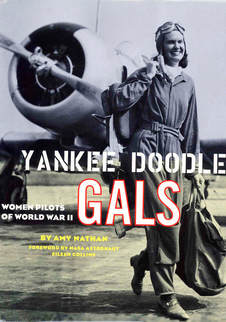 Amy Nathan's book Yankee Doodle Gals tells the stories of many women who served as pilots from 1942 to 1944, including Jacqueline Cochran and Nancy Love, the true leaders of the WASPs. The history of the group, the hardships they faced, the obstacles they overcame, and what has transpired since the end of the war are supplemented by numerous photos that complement the text. For more information on the book, click here. |
*NEWS
|
For Vicki Cobb's BLOG (nonfiction book reviews, info on education, more), click here: Vicki's Blog
The NCSS-CBC Notable Social Studies Committee is pleased to inform you
that 30 People Who Changed the World has been selected for Notable Social Studies Trade Books for Young People 2018, a cooperative project of the National Council for the Social Studies (NCSS) & the Children’s Book Council
Categories
All
Abolitionists
Adams Janus
Adaptation
Adaptations
Adkins Jan
Advertising
Aerodynamics
Africa
African American History
African Americans
Africa West
Agriculture
Aircraft
Air Pilots
Air Pressure
Air Travel
Albee Sarah
Alchemy
Alligators
Allusion
American History
American Icons
Amphibians
Amundsen Roald
Anatomy
Ancient
Ancient Cultures
Anderson Marian 1897-1993
Animal Behavior
Animal Experimentation
Animal Intelligence
Animals
Animation
Antarctica
Ants
Apache Indians
Apes
April Fool's Day
Architecture
Argument
Arithmetic
Art
Art Deco
Artists
Arts
Asia
Astronauts
Astronomy
Athletes
Atomic Theory
Audubon Societies
Authors
Autobiography
Automobiles
Aviation
Awards
Bacteria
Baseball
Battuta Ibn
Bears
Beatles
Beavers
Bees
Biodegradation
Biography
Biology
Biomes
Biomimicry
Biplanes
Birds
Black Death
Black History
Blindness
Blizzards
Bombs
Bonaparte Napoleon
Boone Daniel
Botany
Brazil
Bridges
Brill Marlene Targ
Brooklyn Bridge
Brown John
Buffaloes
Building Materials
Butterflies
Caesar
Caesar Julius
Caissons
Calculus
Calendars
Cannibal
Capitals
Caravaggio
Carbon Dioxide
Carnivores
Carson Mary Kay
Cartoons & Comics
Carving (Decorative Arts)
Cascade Range
Castaldo Nancy
Castles
Castrovilla Selene
Cathedrals
Cats
Caves
Celts
Cemeteries
Chemistry
Children's Authors
Child Welfare
China
Choctaw Indians
Christmas
Chronometers
Cicadas
Cinco De Mayo
Ciphers
Circle
Citizenship
Civil Rights
Civil Rights Movements
Civil War
Civil War - US
Climate
Climate Change
Clocks And Watches
Clouds
Cobb Vicki
COBOL (Computer Language)
Code And Cipher Stories
Collard III Sneed B.
Collectors And Collecting
Color
Commerce
Communication
Competition
Compilers
Composers
Computers
Congressional Gold Medal
Consitution
Contests
Contraltos
Coolidge Calvin
Cooling
Corms
Corn
Counterfeiters
Covid-19
Crocodiles
Cryptography
Culture
Darwin Charles
Declaration Of Independence
Decomposition
Decompression Sickness
Deep-sea Animals
Deer
De Medici Catherine
Design
Detectives
Dickens Charles
Disasters
Discrimination
Diseases
Disney Walt
DNA
Dogs
Dollar
Dolphins
Douglass Frederick 1818-1895
Droughts
Dr. Suess
Dunphy Madeleine
Ear
Earth
Earthquakes
Ecology
Economics
Ecosystem
Edison Thomas A
Education
Egypt
Eiffel-gustave-18321923
Eiffel-tower
Einstein-albert
Elephants
Elk
Emancipationproclamation
Endangered Species
Endangered-species
Energy
Engineering
England
Englishlanguage-arts
Entomology
Environmental-protection
Environmental-science
Equinox
Erie-canal
Etymology
Europe
European-history
Evolution
Experiments
Explorers
Explosions
Exports
Extinction
Extinction-biology
Eye
Fairs
Fawkes-guy
Federalgovernment
Film
Fires
Fishes
Flight
Floods
Flowers
Flute
Food
Food-chains
Foodpreservation
Foodsupply
Food-supply
Football
Forceandenergy
Force-and-energy
Forensicscienceandmedicine
Forensic Science And Medicine
Fossils
Foundlings
France
Francoprussian-war
Freedom
Freedomofspeech
French-revolution
Friction
Frogs
Frontier
Frontier-and-pioneer-life
Frozenfoods
Fugitiveslaves
Fultonrobert
Galapagos-islands
Galleys
Gametheory
Gaudi-antoni-18521926
Gender
Generals
Genes
Genetics
Geography
Geology
Geometry
Geysers
Ghosts
Giraffe
Glaciers
Glaucoma
Gliders-aeronautics
Global-warming
Gods-goddesses
Gold-mines-and-mining
Government
Grant-ulysses-s
Grasshoppers
Gravity
Great-britain
Great-depression
Greece
Greek-letters
Greenberg Jan
Hair
Halloween
Handel-george-frederic
Harness Cheryl
Harrison-john-16931776
Health-wellness
Hearing
Hearing-aids
Hearst-william-randolph
Henry-iv-king-of-england
Herbivores
Hip Hop
History
History-19th-century
History-france
History-world
Hitler-adolph
Hoaxes
Holidays
Hollihan Kerrie Logan
Homestead-law
Hopper-grace
Horses
Hot Air Balloons
Hot-air-balloons
Housing
Huguenots
Human Body
Hurricanes
Ice
Icebergs
Illustration
Imagery
Imhotep
Imperialism
Indian-code-talkers
Indonesia
Industrialization
Industrial-revolution
Inquisition
Insects
Insulation
Intelligence
Interstatecommerce
Interviewing
Inventions
Inventors
Irrational-numbers
Irrigation
Islands
Jacksonandrew
Jazz
Jeffersonthomas
Jefferson-thomas
Jemisonmae
Jenkins-steve
Jet-stream
Johnsonlyndonb
Jokes
Journalism
Keeling-charles-d
Kennedyjohnf
Kenya
Kidnapping
Kingmartinlutherjr19291968
Kingmartinlutherjr19291968d6528702d6
Kings-and-rulers
Kings Queens
Kings-queens
Koala
Labor
Labor Policy
Lafayette Marie Joseph Paul Yves Roch Gilbert Du Motier Marquis De 17571834
Landscapes
Languages-and-culture
Law-enforcement
Layfayette
Levers
Levinson Cynthia
Lewis And Clark Expedition (1804-1806)
Lewis Edmonia
Liberty
Lift (Aerodynamics)
Light
Lindbergh Charles
Liszt Franz
Literary Devices
Literature
Lizards
Longitude
Louis XIV King Of France
Lumber
Lunar Calendar
Lynching
Macaws
Madison-dolley
Madison-james
Madison-james
Mammals
Maneta-norman
Maneta-norman
Marathon-greece
Marine-biology
Marine-biology
Marines
Marsupials
Martial-arts
Marx-trish
Mass
Massachusetts-maritime-academy
Mass-media
Mastodons
Mathematics
May-day
Mcclafferty-carla-killough
Mcclafferty-carla-killough
Mckinley-william
Measurement
Mechanics
Media-literacy
Media-literacy
Medicine
Memoir
Memorial-day
Metaphor
Meteorology
Mexico
Mickey-mouse
Microscopy
Middle-west
Migration
Military
Miners
Mississippi
Molasses
Monarchy
Monsters
Montgomery
Montgomery-bus-boycott-19551956
Montgomery-heather-l
Monuments
Moon
Moran-thomas
Morsecode
Morsesamuel
Moss-marissa
Moss-marissa
Motion
Motion-pictures
Mummies
Munro-roxie
Munro-roxie
Musclestrength
Museums
Music
Muslims
Mythologygreek
Nanofibers
Nanotechnology
Nathan-amy
Nathan-amy
Nationalfootballleague
Nationalparksandreserves
Nativeamericans
Native-americans
Native-americans
Naturalhistory
Naturalists
Nature
Nauticalcharts
Nauticalinstruments
Navajoindians
Navigation
Navy
Ncaafootball
Nervoussystem
Newdeal19331939
Newman-aline
Newman-aline
Newton-isaac
New-york-city
Nobelprizewinners
Nomads
Nonfictionnarrative
Nutrition
Nylon
Nymphs-insects
Oaths Of Office
Occupations
Ocean
Ocean-liners
Olympics
Omnivores
Optics
Origami
Origin
Orphans
Ottomanempire
Painters
Painting
Paleontology
Pandemic
Paper-airplanes
Parksrosa19132005
Parrots
Passiveresistance
Patent Dorothy Hinshaw
Peerreview
Penguins
Persistence
Personalnarrative
Personification
Pets
Photography
Physics
Pi
Pigeons
Pilots
Pinkertonallan
Pirates
Plague
Plains
Plainsindians
Planets
Plantbreeding
Plants
Plastics
Poaching
Poetry
Poisons
Poland
Police
Political-parties
Pollen
Pollution
Polo-marco
Populism
Portraits
Predation
Predators
Presidentialmedaloffreedom
Presidents
Prey
Prey-predators
Prey-predators
Prime-meridian
Pringle Laurence
Prohibition
Proteins
Protestandsocialmovements
Protestants
Protestsongs
Punishment
Pyramids
Questioning
Radio
Railroad
Rainforests
Rappaport-doreen
Ratio
Reading
Realism
Recipes
Recycling
Refrigerators
Reich-susanna
Religion
Renaissance
Reproduction
Reptiles
Reservoirs
Rheumatoidarthritis
Rhythm-and-blues-music
Rice
Rivers
Roaringtwenties
Roosevelteleanor
Rooseveltfranklind
Roosevelt-franklin-d
Roosevelt-theodore
Running
Russia
Safety
Sanitation
Schwartz David M
Science
Scientificmethod
Scientists
Scottrobert
Sculpture
Sculpturegardens
Sea-level
Seals
Seals-animals
Secretariesofstate
Secretservice
Seeds
Segregation
Segregationineducation
Sensessensation
September11terroristattacks2001
Seuss
Sextant
Shackletonernest
Shawneeindians
Ships
Shortstories
Silkworms
Simple-machines
Singers
Siy Alexandra
Slavery
Smuggling
Snakes
Socialchange
Social-change
Socialjustice
Social-justice
Socialstudies
Social-studies
Social-studies
Sodhouses
Solarsystem
Sound
Southeast-asia
Soybean
Space Travelers
Spain
Speech
Speed
Spiders
Spies
Spiritualssongs
Sports
Sports-history
Sports-science
Spring
Squirrels
Statue-of-liberty
STEM
Storms
Strategy
Sugar
Sumatra
Summer
Superbowl
Surgery
Survival
Swanson-jennifer
Swinburne Stephen R.
Synthetic-drugs
Taiwan
Tardigrada
Tasmania
Tasmanian Devil
Tasmanian-devil
Technology
Tecumsehshawneechief
Telegraph-wireless
Temperature
Tennis
Terrorism
Thomas Peggy
Thompson Laurie Ann
Time
Titanic
Tombs
Tortoises
Towle Sarah
Transcontinental-flights
Transportation
Travel
Trees
Trung Sisters Rebellion
Tundra
Turnips
Turtles
Typhoons
Underground Railroad
Us-environmental-protection-agency
Us History
Us-history
Ushistoryrevolution
Us History Revolution
Us-history-war-of-1812
Us Presidents
Ussupremecourtlandmarkcases
Vacations
Vaccines
Vangoghvincent
Vegetables
Venom
Vietnam
Viruses
Visual-literacy
Volcanoes
Voting-rghts
War
Warne-kate
Warren Andrea
Washington-dc
Washington George
Water
Water-currents
Wax-figures
Weapons
Weather
Weatherford Carole Boston
Whiting Jim
Wildfires
Winds
Windsor-castle
Wolves
Woman In History
Women
Women Airforce Service Pilots
Women-airforce-service-pilots
Womeninhistory
Women In History
Women-in-science
Women's History
Womens-roles-through-history
Wonder
Woodson-carter-godwin-18751950
World-war-i
World War Ii
World-war-ii
Wright Brothers
Writing
Writing-skills
Wwi
Xrays
Yellowstone-national-park
Zaunders Bo
ArchivesMarch 2021
February 2021
January 2021
December 2020
November 2020
October 2020
September 2020
June 2020
May 2020
April 2020
March 2020
February 2020
January 2020
December 2019
October 2019
September 2019
August 2019
July 2019
May 2019
April 2019
March 2019
February 2019
January 2019
December 2018
November 2018
September 2018
June 2018
May 2018
April 2018
March 2018
February 2018
January 2018
December 2017
November 2017
October 2017
September 2017
March 2017
The NONFICTION MINUTE, Authors on Call, and. the iNK Books & Media Store are divisions of iNK THINK TANK INC.
a 501 (c) (3) nonprofit corporation. To return to the iNK Think Tank landing page click the icon or the link below. :
http://inkthinktank.org/
For more information or support, contact thoughts@inkthinktank.org
For Privacy Policy, go to
Privacy Policy
© COPYRIGHT the Nonfiction Minute 2020.
ALL RIGHTS RESERVED.
This site uses cookies to personalize your experience, analyze site usage, and offer tailored promotions. www.youronlinechoices.eu
Remind me later
Archives
March 2023
February 2023
January 2023
December 2022
November 2022
October 2022
September 2022
June 2022
May 2022
April 2022
March 2022
February 2022
January 2022
December 2021
November 2021
September 2021
April 2021
March 2021
February 2021
November 2020
October 2020
September 2020
June 2020
May 2020
April 2020
March 2020
February 2020
January 2020
October 2019
August 2019
July 2019
May 2019
April 2019
December 2018
September 2018
June 2018
May 2018
March 2018
February 2018
January 2018
December 2017
November 2017
October 2017
September 2017


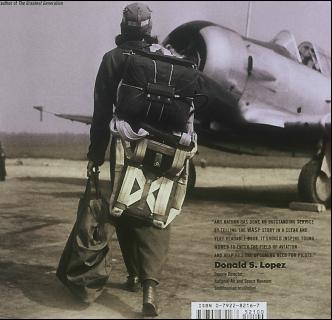


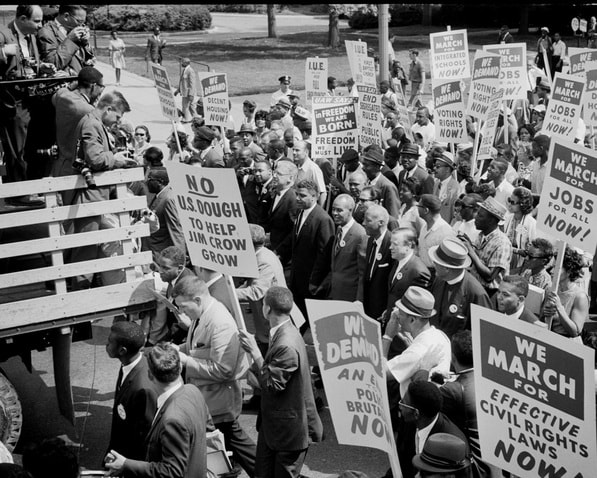
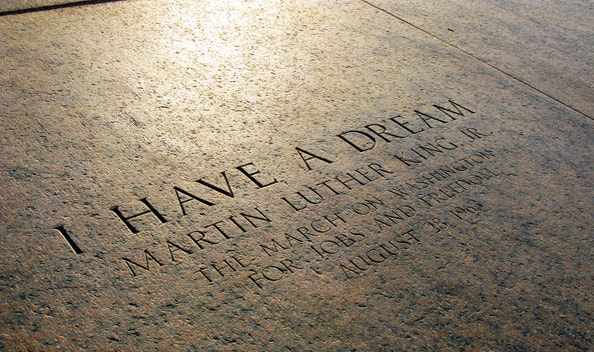


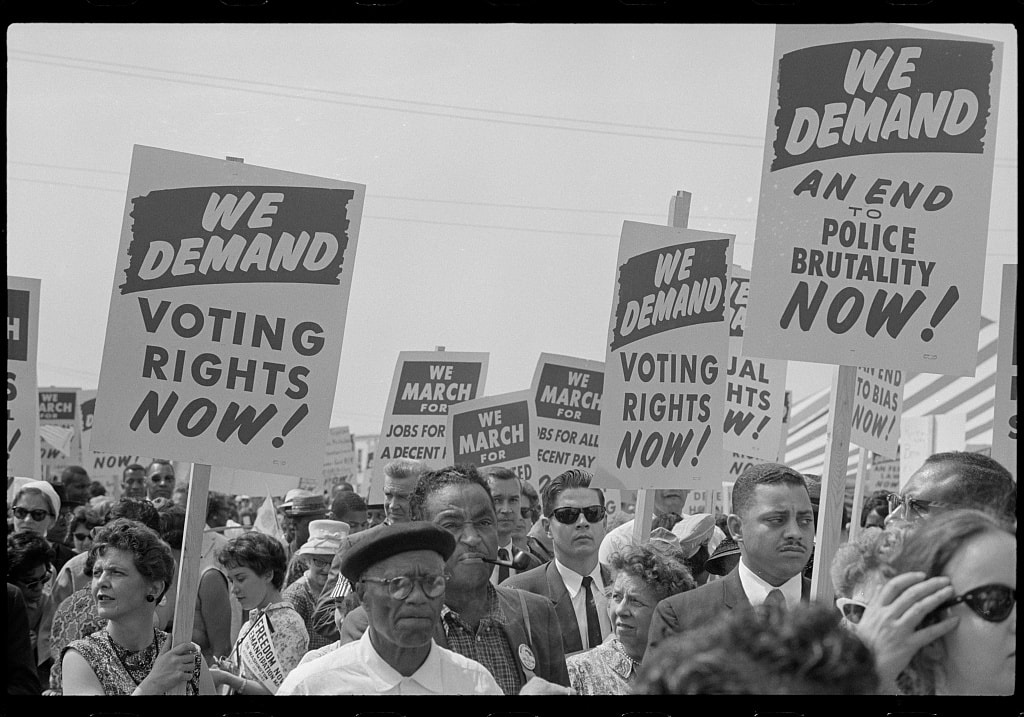


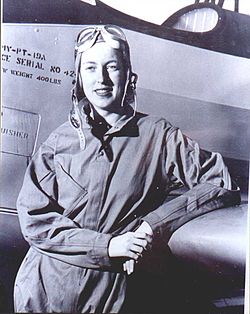

 RSS Feed
RSS Feed
